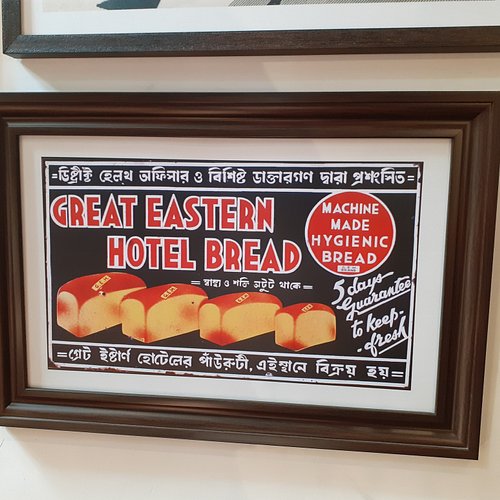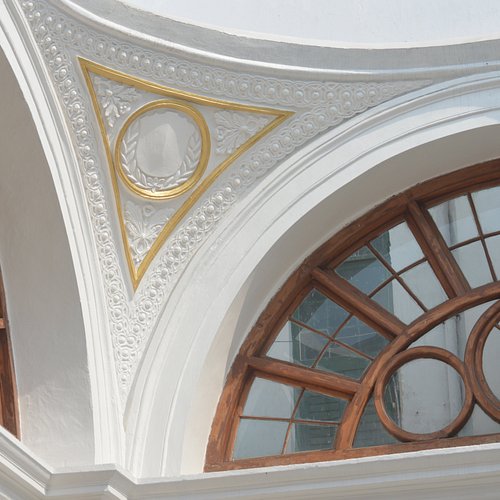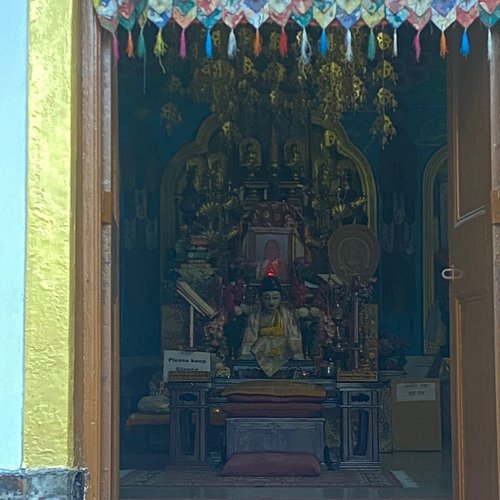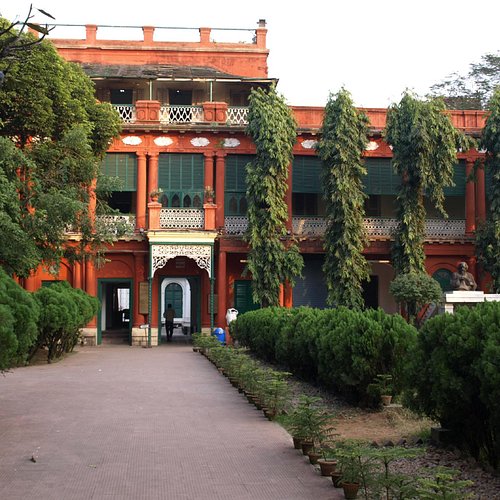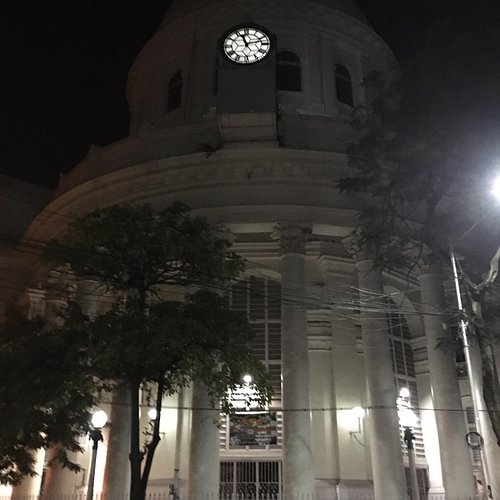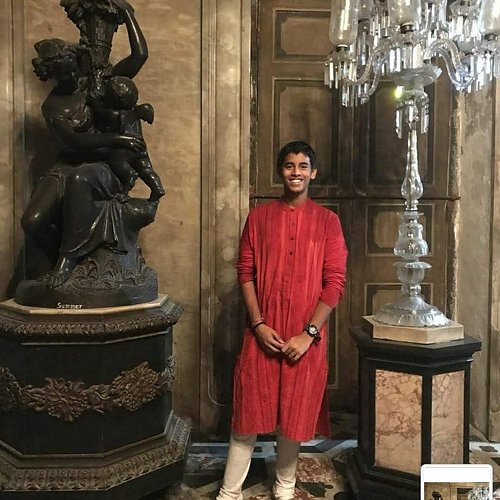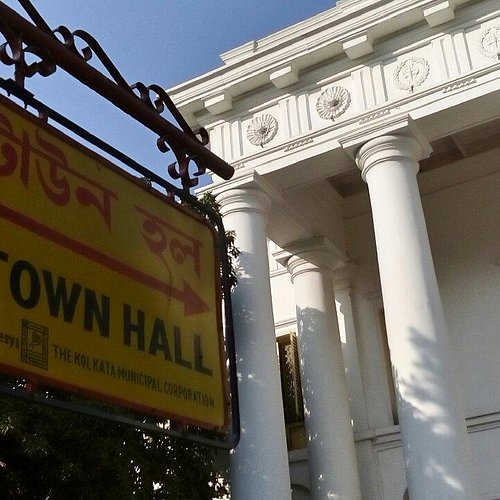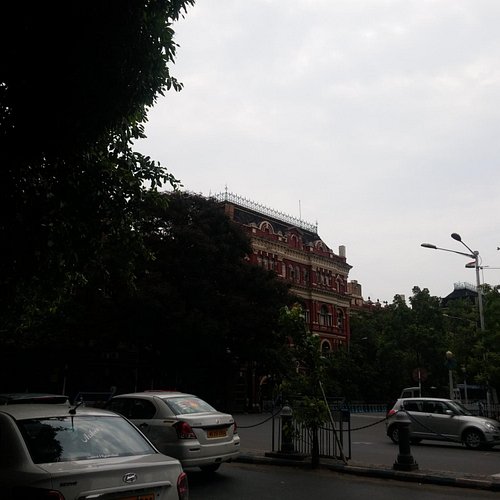What to do and see in Kolkata District, West Bengal: The Best Architectural Buildings
Discover the best top things to do in Kolkata District, India including Metcalfe Hall, Currency Building - Ghare Baire, Nipponzan Myohoji Buddha Temple, Jorasanko Thakur Bari, Tippu Sultan's Mosque, General Post Office, Marble Palace, St. John's Church, Town Hall, Writers' Building.
Restaurants in Kolkata District
1. Metcalfe Hall
Overall Ratings
5.0 based on 6 reviews
Reviewed By atulya_sinha - Kolkata (Calcutta), India
Metcalfe Hall was built in the mid 19th century in honour of Charles Metcalfe, officiating Governor General of India in 1835-36, who later served as Governor General of Canada. The building was designed by C.K.Robinson in classical Greek style and is noted for its colonnades supported by massive Corinthian columns. Initially, this building was used as a public library. The books collected here eventually formed the nucleus of the National Library, now located in Alipore. In the 20th century, the condition of the building gradually deteriorated and its main entrance towards Strand Road was sealed off. Its ground floor was being used by the Asiatic Society, while the first floor was occupied by the Archaeological Survey of India (ASI). It was declared a protected monument in 1992. It reopened as a museum in 2019 after extensive restoration. My wife and I visited the Metcalfe Hall Museum as a part of a guided walk recently. Some highlights: a) An exhibition on the works of Satyajit Ray can be seen on the ground floor b) A small gallery has large blow ups of iconic buildings and structures of Kolkata, such as Howrah Bridge and the High Court c) Another small gallery displays photos of the process of restoration of the building d) They offer a short, but memorable, video showing finger puppetry on the theme of Kolkata e) An exquisite wooden staircase, with well-preserved posters of bygone days displayed around it, takes you to the upper floor f) A full sized wooden boat is on display on the first floor (it must have been a challenge to transport it there!) g) Videos of Kolkata are projected on muslin screens on the first floor h) One can see some exceptional photos of Kolkata over the years, clicked by well-known photographers i) Some arts & handicrafts of Bengal, such as “Shola” are on display j) There is a nice view of Strand Road and the river beyond it from the windows of the first floor gallery k) There is a small room adorned with a hand-drawn rickshaw on the ground floor, where visitors can leave notes expressing their thoughts on Kolkata The building has been painstakingly restored and the exhibits have been carefully selected. There is no entry fee. Metcalfe Hall is certainly worth a visit for both residents of and visitors to the city.
2. Currency Building - Ghare Baire
Overall Ratings
5.0 based on 2 reviews
Ghare Baire, at the Currency Building, is a museum exhibition featuring three centuries of art from Bengal. Housed in a beautifully restored heritage building, this is the first comprehensive exhibition of art from a region that has been an important part of the history of South Asia. Drop by to travel through time from the arrival of the British to the years after independence, and to see first-hand art works by Rabindranath Tagore, Abanindranath Tagore, Nandalal Bose, Jamini Roy and many others. The exhibition is free and open to all, and the museum is also host to a range of programs for children, artists and art lovers alike.
Reviewed By EJR19 - Buonconvento, Italy
This is a must see if you are in central Kolkata. Right by BBD Bagh is this newly and outstandingly restored old building where currency was kept (you can still see strong room) and which now houses a brilliant art collection giving the history of the school of Bengal art from its origins in traditional Indian paintings and British landscapes (a superb collection of old British pictures of Calcutta) to the post colonial modernists. There is an excellent commentary on the art which is intelligent and helpful. The staff are charming and it’s free!
3. Nipponzan Myohoji Buddha Temple
4. Jorasanko Thakur Bari
Overall Ratings
4.5 based on 321 reviews
Reviewed By atulya_sinha - Kolkata (Calcutta), India
Jorasanko Thakurbari features prominently in the autobiographies of Rabindranath Tagore and his nephew Abanindranath. It was known as a centre of vocal and instrumental music, acting and stage décor, poetry and play readings, sketching and painting, and much else. Above all, it was the home of the illustrious Tagore family. The Thakurbari consists of three interconnected structures built in different centuries. Ram Bhavan, the earliest building at the site, was built by Nilmani Tagore (1729-91) when he shifted there from Pathurighata in 1784. The triple-storied main building, which forms the main façade that one sees while entering from Rabindra Sarani, is Maharshi Bhavan, named after Mahirshi Debendranath Tagore. Finally, the smaller building on the left is Vichitra Bhavan, constructed by Gurudev Rabindranath Tagore in the 20th century. One enters the complex through a long passage starting from an arch on Rabindra Sarani. The Thakurbari, with its red and cream walls and green woodwork is a magnificent sight. You buy tickets near the gate – Rs 20 per head. In case you intend to use a camera or camera phone, you need to buy another ticket for Rs. 50 from the Museum office, but you are still not permitted to take any pictures inside the buildings. Incidentally, the tickets are aesthetically designed and worth preserving as souvenirs! You take off your shoes and pass the tiny reception/ sales counter, go up the main staircase and find yourself in the modest suite of rooms once occupied by Rabindranath, including the chamber where he breathed his last in 1941. You turn left at the end of the corridor, where you find two galleries of paintings: the first contains works of the Bengal school (mostly water colours), while the other has western style portraits of several generations of Tagores. A replica of the Nobel prize medal awarded to Rabindranath Tagore in 1913 is also on display. Next, you enter Ram Bhavan, the oldest structure. You see the room where Rabindranath and other family members were born. An alcove in the wall and some simple furniture from the original room has been carefully preserved. As you proceed further, you find four galleries which commemorate Tagore’s travels to America, China, Japan and Hungary respectively. These galleries have been sponsored by the governments or academic institutions of the respective countries and their displays seem quite ostentatious after the stark simplicity of the earlier galleries. You return to Maharshi Bhavan and reach Vichitra Bhavan through a small flight of stairs. It turns out that Vichitra Bhavan – true to its name – is a double-storey building which was constructed without a staircase! Later, a small wooden staircase was added, which can be seen in the reception chamber on the ground floor, but it is blocked off on the first floor. The upper floor of Vichitra Bhavan contains one large hall with a few smaller chambers, where pictures and other memorabilia associated with the Tagore family are on display. The lower floor contains the library and research centre, which are not open to public. Despite the grandeur of the buildings and the fabulous wealth of the Tagore family, one finds no trace of opulence in their lifestyle – just compare the simplicity of Jorasanko with the extreme flamboyance of Mullick Thakurbari (also known as the Marble Palace) in the same neighbourhood. It appears that Prince Dwarkanath Tagore (1794-1846), the poet’s grandfather, had rejected European culture in his home and organized a great sale of his household goods – including china, clocks, marble-topped tables, mahogany chairs and pianos – as far back as 1841! Later generations of the Tagore family were to become leaders of the Bengal Renaissance across diverse forms of art, including painting, drama, poetry and music. Highly educated individuals volunteer to work as guides in Jorasanko – we had the honour of being escorted by a young lady with two post-graduate degrees, including one from Rabindra Bharti University itself. Such learned guides combine deep scholarship with much adoration for the institution. They are fluent in multiple languages – including English, Hindi and Bangla. A visit to Jorasanko Thakurbari is highly recommended.
5. Tippu Sultan's Mosque
6. General Post Office
Overall Ratings
4.5 based on 58 reviews
Reviewed By ankan146 - Kolkata (Calcutta), India
general post office,, is a huge building with vast pillars and giant structure, first day covers and excusive coins are availble.along with stamps and whole lot of speed post courier/mailing service.millenium park and ferry ghat is nearby. (giv vote if liked)
7. Marble Palace
Overall Ratings
4.0 based on 27 reviews
Built in 1835, this largely Italian marble palace, has an odd conglomeration of attractions: winding stairways, underground cellars, huge verandahs, statues, an impressive collection of antiques, caves with cannons, a zoo and duck ponds.
Reviewed By NITASH
Through the narrow lanes when one reaches this place it seems unreal to find such a vast property in that area. The place has its own guides whom you can tip after the walk. Shoes ar e not allowed inside the palace so remember to wear socks if you have an issue walking barefoot, though the place is neat and clean. The collection of the rich businessman and Zamindar (landlord) of yore is amazing and extravagant. The number of Marbles used for a single flooring was a huge variety and then there was a carpet( rolled up n kept) with the same pattern on it. Interesting this place houses the first zoo of India.
8. St. John's Church
Overall Ratings
4.0 based on 236 reviews
Reviewed By 475vladimirm - Dubai, United Arab Emirates
St. John's Church, originally a cathedral, was among the first public buildings erected by the East India Company after Kolkata (Calcutta) became the capital of British India. It is located at the North-Western corner of Raj Bhavan, and served as the Anglican Cathedral of Calcutta till 1847, when the see was transferred to St. Paul's Cathedral. Construction of the building, modelled on St Martin-in-the-Fields of London, started in 1784, with Rs 30,000 raised through a public lottery, and was completed in 1787. Currently, the church is undergoing restoration.
9. Town Hall
10. Writers' Building
Overall Ratings
4.0 based on 65 reviews
Reviewed By Anuradha777
One of the most iconic buildings in Kolkata. In this building Binoy, Badal and Dinesh hasve shot an English officer, during freedom struggle. That’s why this locality is also termed as BBD Bagh, where this building is situated.

